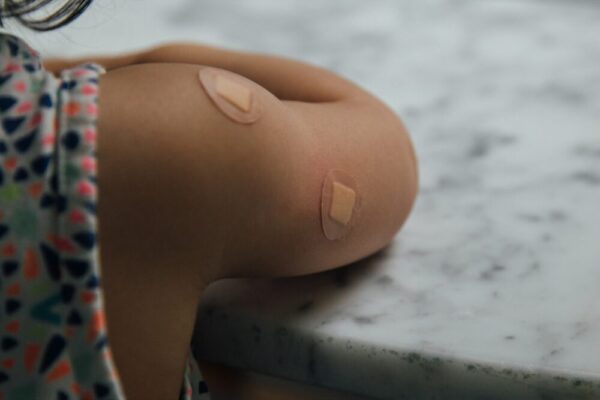Certain diseases are presented amongst us and suffered by people living amongst us, making it necessary to be aware of such conditions. Science collectively is trying its best to eradicate few diseases that no cure has been successfully developed yet. Still, there are also diseases to which treatment has successfully been developed and on-going.
While there are cures to some of the diseases, there is a disgust factor that makes it difficult for people to live an everyday life suffering from such conditions. The social stigma, the acceptance is what people ask for, and diseases could put a full stop to all the hard work and determination of these people and several other organizations.
It’s World Leprosy Day today, and it is essential to talk about this condition knowing the social taboo it is and the people who suffer from it. Since hundreds of organizations have initiated to help leprosy-affected people and their families, let us try and understand the disease a little bit more closely.
So what exactly we need to know about the disease? Leprosy is mainly a bacteria infection that progresses slowly, attacking the macrophages, which the central part of our immune system, and the Schwann cells, which are responsible for supporting our nervous system. The effecting of both these parts causes disfigurement, leading to other severely affecting health conditions.
The infection is caused by two kinds of bacteria known as Mycobacterium leprae (M. leprae) or Mycobacterium lepromatosis (M. lepromatosis). There are also theories about leprosy-affected people that those who get severely affected can transmit the infection via the droplets from their nose and mouth. But this is again a theory, and nothing of this sort has been confirmed by various organizations working on curing the people.
The other name given to Leprosy Disease is Hansen’s disease and is not incredibly contagious since there has been the development of treatments to cure it completely. Sources have mentioned that about 95 percent of people are already immune to the disease all around the world, and even after an extended period of exposure to this disease, there are low chances of getting affected.
Leprosy attacks the nervous system and the body slowly because the bacteria cause the condition to progress towards driving severe health conditions in the body by gradually multiplying itself. However, most countries around the world have been able to eradicate the disease successfully.
But in whatever countries the disease is still affecting, the number of cases has reduced significantly. Among 10,000 people, less than 1 percent of people suffer from leprosy due to proper treatment and awareness.
The Potential Symptoms of Leprosy
As experts have said and observed, leprosy has shown different symptoms in different people with the condition depending on how much their body has been affected over the years.
- There is the appearance of lesions over the skin that are lighter than the standard skin color. The lesions remain on the skin for weeks, even for months.
- There is a numbness of sensation on hands, feet, and arms, also known as glove and stocking anesthesia. This numbness of sensation could also lead to repeated injuries and wounds that usually go unnoticed. The numbness results from nerve damage, which then leads to severe infections as the immune system becomes weak due to the occurrence of the disease.
- The prevalence of stuffy nose and nosebleeding as the mucous membrane inside the nose gets damaged and leaves a scar or infection inside.
- There are eye problems due to the disease-causing the nerves to damage. Hence, destroying the nerves that cause blinking of an eye, making the eyes dry from the inside, leading to eye infections.
- There are chances of tissue loss, which becomes all the more reason for injuries and damage of the nerve turning serious that causes shortening of toe and fingers due to paralysis of small muscles especially in the hands as a typical symptom of leprosy.
- Enlarged nerves in elbows and knees
- The sensation of heat, touch, and pain eventually decreases.
- muscle weakness
- Ulcers on the feet soles
Diagnosis and Prevention
The diagnosis becomes more effortless in leprosy because the patient’s physical appearance of the nerves and curled up fingers mostly speak for the disease. A proper lab test is required only when physical signs are not very clear to give a diagnosis.
A physician would recognize the disease when he/she sees skin lesions and patches as well as skin smears, which would make it evident whether one has the disease or not. The only way to prevent the condition is to treat it and get medical attention in its early stages.
In several parts of the world, people fear leprosy patients and find them untouchable, which is a sad truth. Hence, educating the masses about the diseases, its minute technicalities, what to do with people suffering and are around you?
There are various organizations teaching and doing their bit to support leprosy patients. Unfortunately, the people in parts of the world, such as India, China, and African countries, have separate leprosy colonies.
It hits hard when we know that instead of providing them care, looks, and care for wounds and injuries in these patients, we run away from them. The lack of education is why today, so many leprosy suffering people are homeless, living in poverty, and without treatment, hopelessly waiting to die.
Suppose leprosy patients are given treatment in the early stages, such as multi-drug therapy for about a year, and can significantly reduce the chances of the infected person transmitting the disease any further. We have created this divide where we ignore such people instead of helping them collectively. These patients soon begin feeling isolated and suffer from mental health problems.
So isolating a segment who needs your help is not fair as a society rather a duty to support them each day to combat the disease and eradicate it from the entire world.




